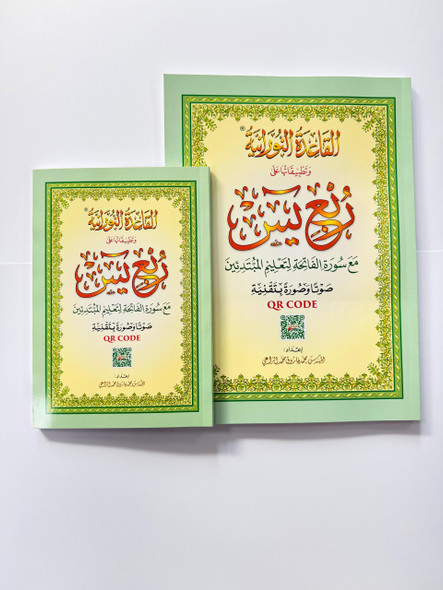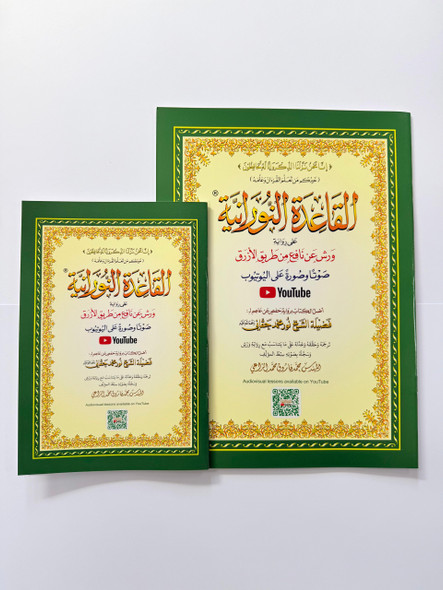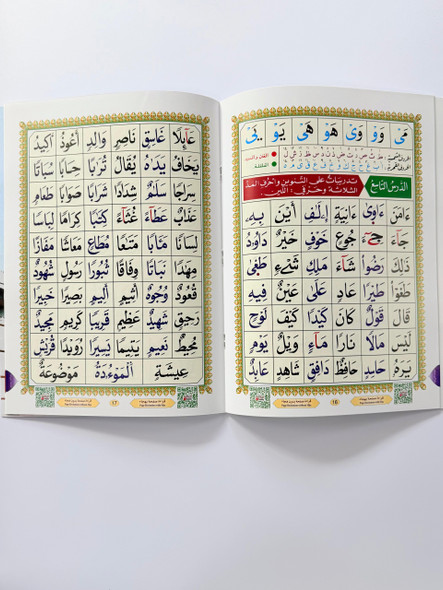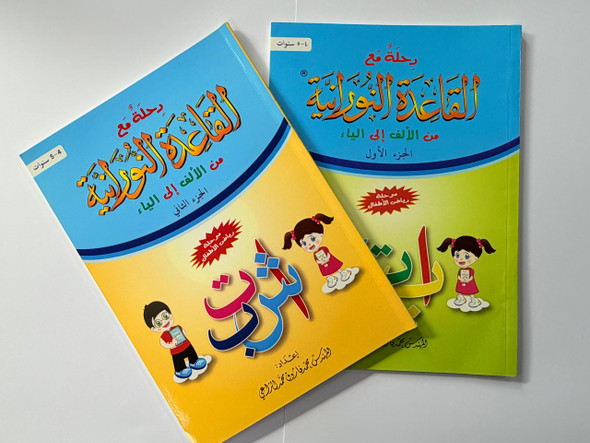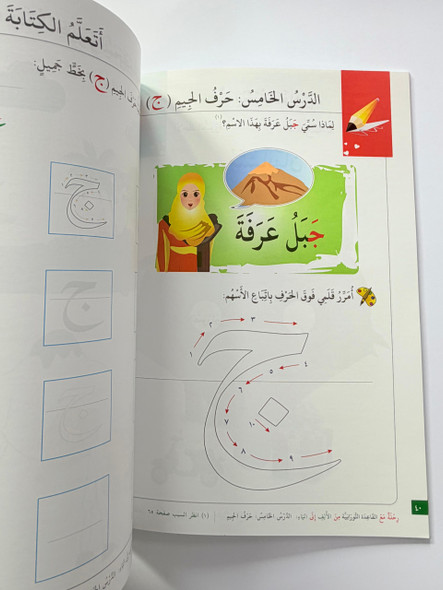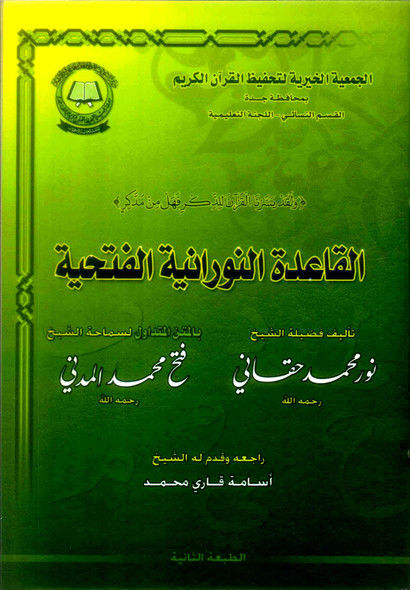Description
Qaidah Nuraniah is a foundational book that teaches learners how to correctly read and pronounce Arabic letters with proper Tajweed — the essential skill for reciting the Qur’an accurately. When applied to Ushr Akhir (the last tenth part of the Qur’an, from Surah Al-Duha to Surah Al-Nas), its principles become especially important because these short surahs are often memorised and recited daily in salah (prayer).
Applications of Qaidah Nuraniah on Ushr Akhir
-
Perfecting Pronunciation (Makharij al-Huruf)
-
Qaidah Nuraniah helps students master the articulation points of Arabic letters.
-
In Ushr Akhir, this ensures correct pronunciation of letters such as ع, ق, غ, and ح, which are often mispronounced by beginners.
-
-
Applying Tajweed Rules
-
The Qaidah introduces basic Tajweed concepts like Ikhfa, Idgham, Iqlab, and Qalqalah.
-
These rules are frequently found in the short surahs of Ushr Akhir, e.g. in Surah Al-Ikhlas (إِنَّهُ هُوَ السَّمِيعُ الْبَصِيرُ) and Surah Al-Nas (مِنَ الْجِنَّةِ وَالنَّاسِ).
-
-
Recognising Long and Short Vowels (Madd)
-
Qaidah Nuraniah teaches when to elongate sounds (e.g. ā, ī, ū) and when to keep them short.
-
This is crucial for reciting Ushr Akhir correctly — for example, in Surah Al-Fil: تَرْمِيهِمْ بِحِجَارَةٍ مِّن سِجِّيلٍ.
-
-
Understanding Sukoon and Shaddah
-
The Qaidah explains how to properly pause on sukoon and double letters using shaddah.
-
Surahs like Al-Falaq and Al-Nas contain many examples where learners must correctly stress letters to avoid changing the meaning.
-
-
Smooth Letter Connection and Reading Flow
-
The Qaidah trains students to join letters correctly in words, enhancing reading fluency.
-
This helps in Ushr Akhir, where short verses flow quickly and require smooth transitions between words.
-







